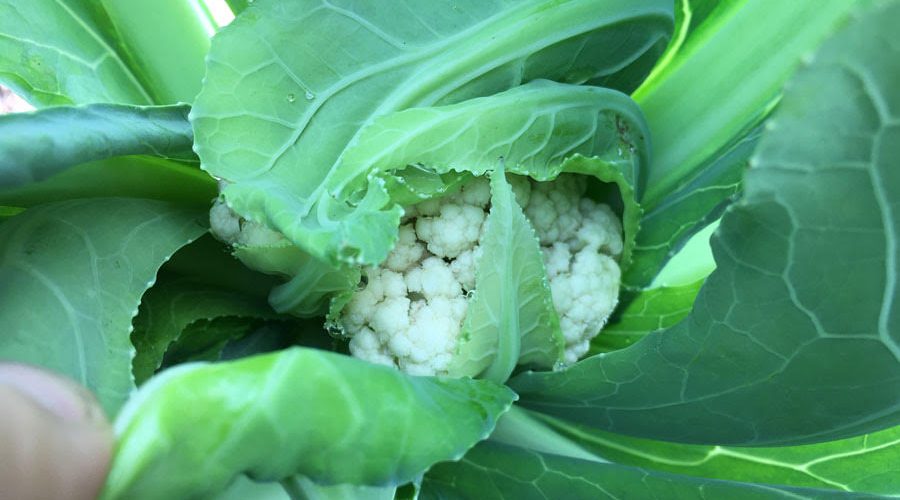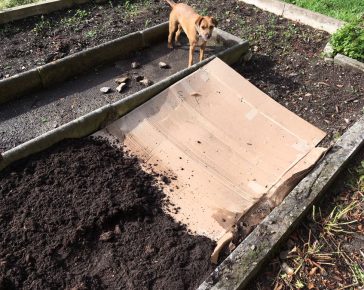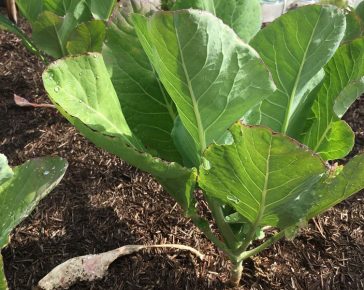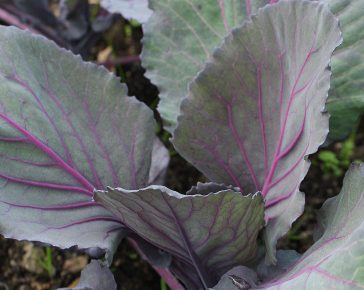It took me a few tries to get the hang of growing cabbages and cauliflower. In the very early attempts, they got eaten by pigeons and decimated by caterpillars. That’s when I learnt to net brassicas (mesh netting, like enviromesh, is brilliant, and you can usually buy it by the metre at a garden centre.)
Once I’d conquered pigeons and cabbage white butterflies, I found that the plants would grow lovely and leafy, but that they wouldn’t form any kind of cabbage heart or cauliflower head. I think the term for that happening is that the plants are ‘blind’ but I could be wrong on that. No doubt a trusty reader will correct me if I’m wrong! Whatever the word, there was no lovely fluffy cauliflower to harvest – a few florets that were more akin to a sprouting broccoli, but not a firm cauliflower that I was hoping for, nor a nice round cabbage – just lots of loose leaves.
I learnt to do the following three things, and since then, I have been pretty successful in my cauliflower and cabbage growing endeavours:
- Planting in a slightly shaded, cool spot – the beds I tend to use for cabbages are in the shade for most of the morning, and then get the afternoon sun. This means that the soil is kept cool and just as it is beginning to warm up, the sun starts to go down s it never reaches that midday heat that other beds do. Cauliflowers and cabbages do much better in cooler temperatures, so having cooler soil really helped.
- Firming in really well – I don’t understand the science behind this, but making sure that the plants are firmed in really well does seem to make a big difference. It’s very easily done – just pop the plants in the ground and then use your heel to tread the soil down well around the base. Really, just go for it and squash the soil down. The plants will be very grateful.
- Mulching – again, this helps to keep the soil cool and no doubt provides plenty of nourishment too. My plot is ‘no dig’ (see below) so I have a good, thick layer of compost to mulch the beds with. If you’re not growing no-dig, then mulching these cool-loving veggies is a really good idea. It just helps to keep the soil temperature a little more cabbage and cauliflower-friendly!
If you’ve struggled in the past, then these are the first three things I’d suggest doing, and I reckon you’ll be really pleased with the results this year!




